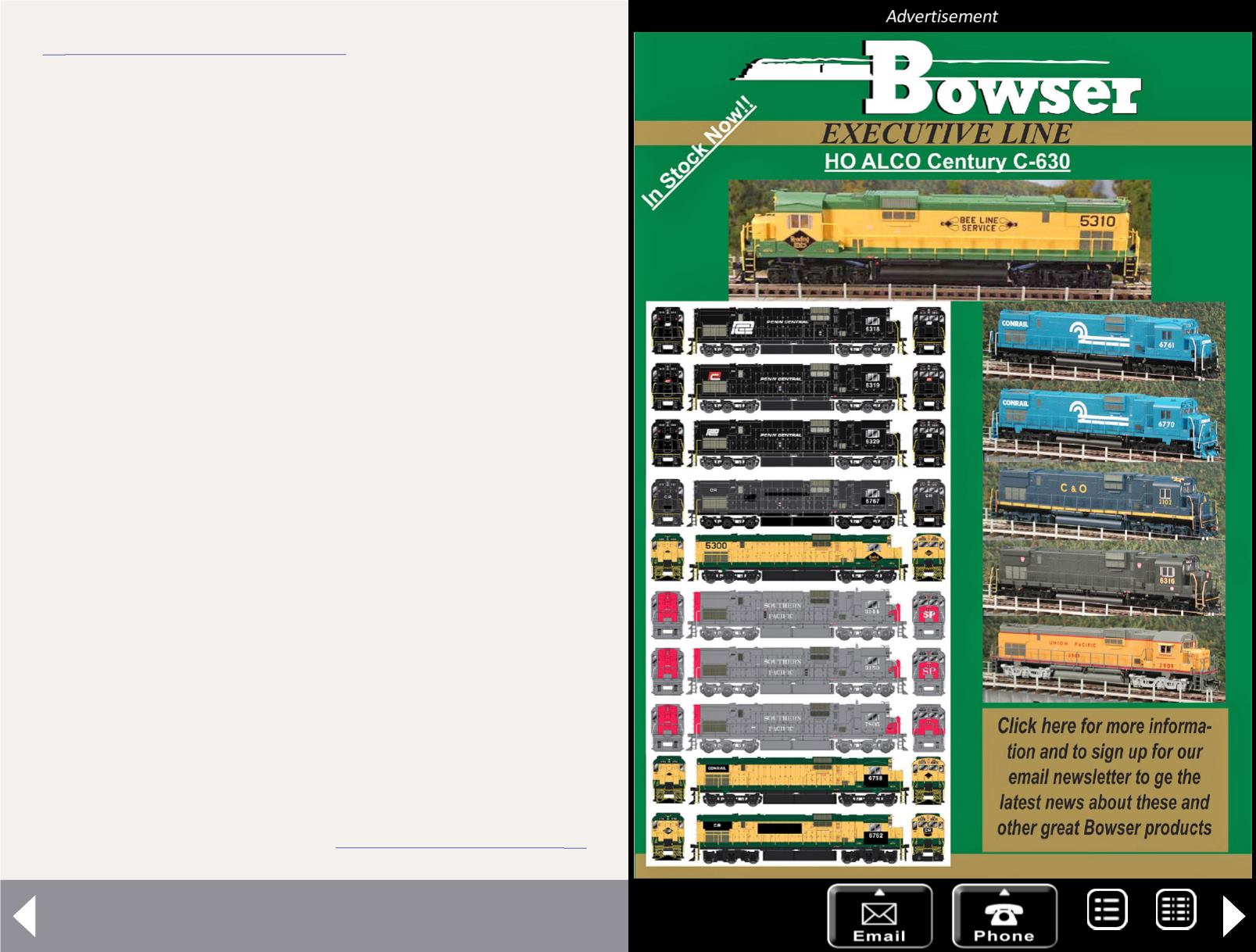
Rick:
“It was somewhere in the neighborhood … I think I put it at
30” reach. Nothing longer than that. We had a scenic offset, espe-
cially out in the mountains, of 6” between the mainline and the
backdrop. I think for industrial spurs we put that at 3”.”
MRH:
“How did you determine the benchwork height, and how
are you dealing with where it changes from one level to the next?”
Rick:
“When I designed the layout, I designed it for 48” base lay-
out height. That turned out to be wrong, because on three walls
in the back basement we have a buttress wall that is 48” high and
11” deep. For the mainline to be Tortoise-ized I had to add space
over the buttress wall. Basically it’s stair-step: when you come
out of Albany you’re at 46, you come to Tallman which I believe is
48, there’s a grade up to Lebanon which is 50, and then it’s 50 all
the way around to Mill City. Then it starts the grade up the hill to
Idanha. Everything has been raised up – it’s the domino effect.
“The grade was going to be a lot steeper because we were going
to go from 50 1/2” all the way up over the door. Now, since every-
thing is raised up, the helper district is not going to be as steep.
But we’re still going to have a helper district.”
MRH:
“So for the higher portions of the layout, you’ve got rela-
tive shrimps like myself who tend to look up at the trains – Do you
have plans for dealing with that?”
Rick:
“Yes. Raised floor. Originally it was raised floor, but I think
what we’re going to do now is have benches around the perimeter
that will be raised. We went to one layout in Corvallis and he has
a similar challenge. He has his benchwork high, and he just made
benches around on the perimeter following the lay of the layout,
Columbia Cascade and Western - 17
MRH-Feb 2013


